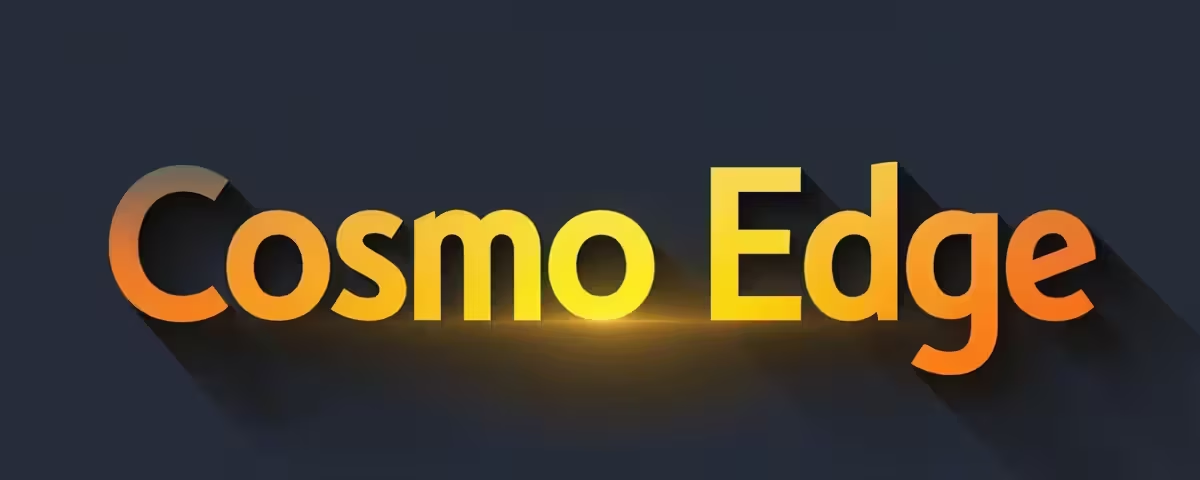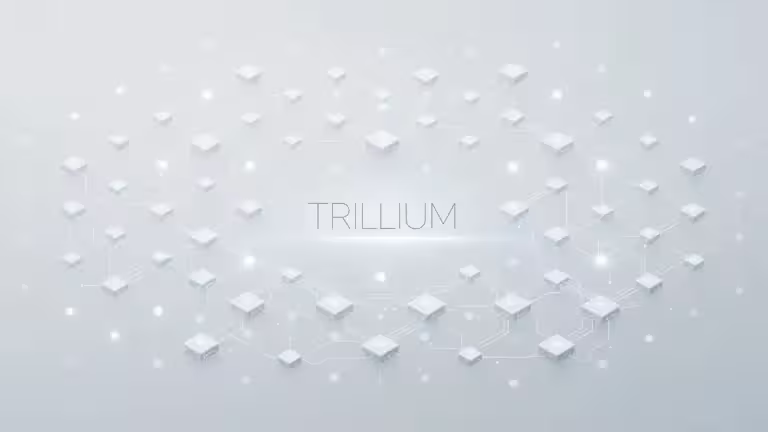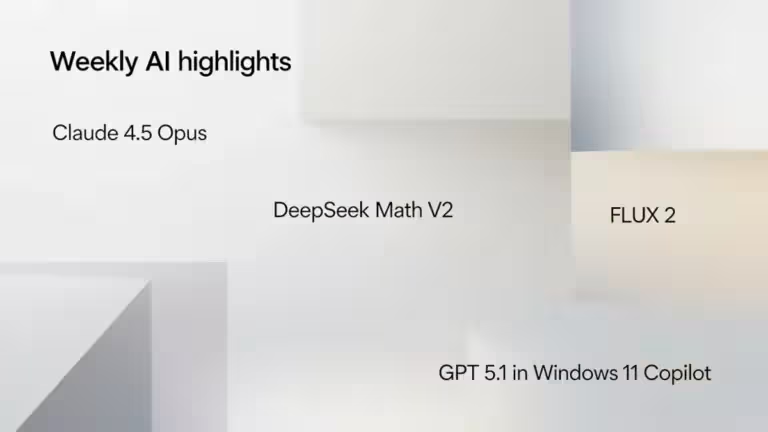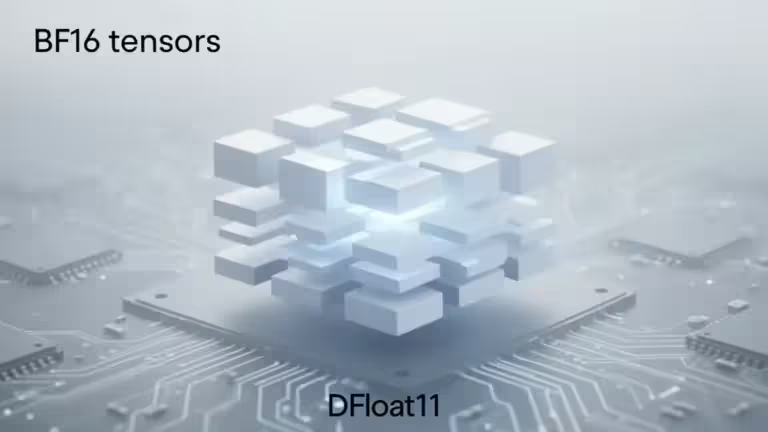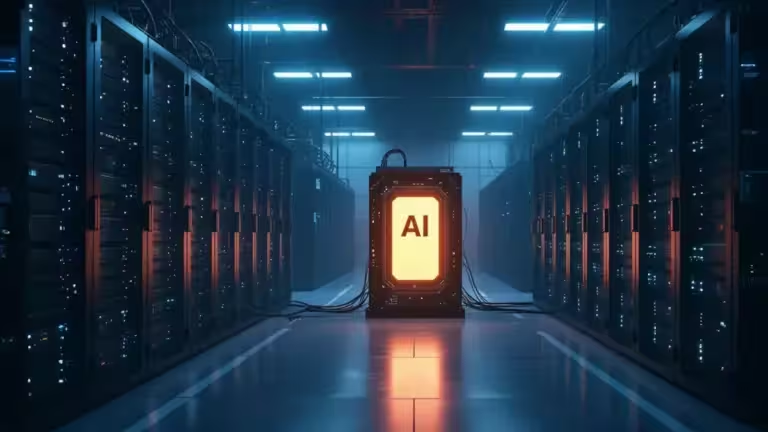What Are AI Tokens? The Complete Guide to Understanding Tokens in Artificial Intelligence
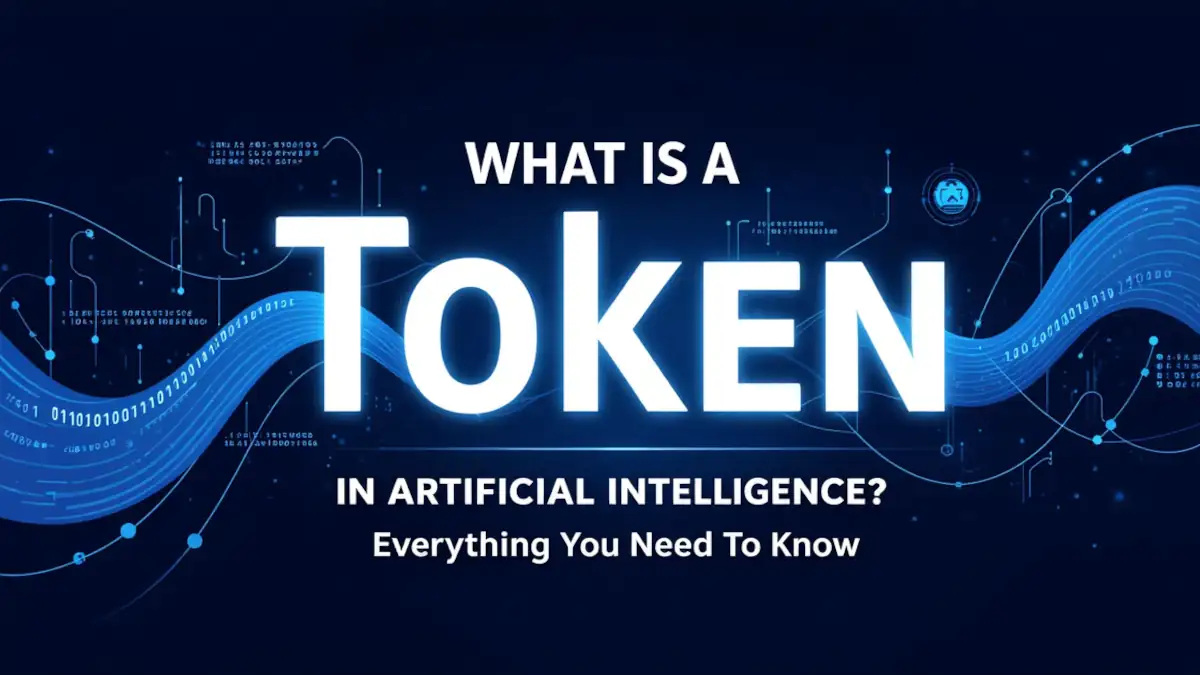
You use GPT-5, Claude 4.5, or Grok 4 daily, but do you truly understand what happens behind each word generated by these artificial intelligences? In October 2025, AI models reach spectacular performance levels with context windows extending up to 2 million tokens for Grok 4 Fast. Yet, the term “token” remains enigmatic for many users.
Understanding tokens has become essential, both for optimizing your costs and for fully leveraging the capabilities of generative AI. As an executive interviewed by Andreessen Horowitz points out, “what I spent in 2023, I now spend in a week”, a striking illustration of the explosion in usage and budgets related to tokens. According to the AI Index 2025 from Stanford, 78% of organizations now use AI, compared to only 55% the previous year.
But what exactly is a token? Why is it crucial for ChatGPT, Claude, Gemini, and all other large language models? How do these tiny units of data impact performance, costs, and the quality of generated responses?
This article offers a comprehensive and accessible exploration of the concept of tokens in artificial intelligence. You’ll discover a clear definition, the technical workings of tokenization, practical equivalents for better visualization of what tokens represent, a comparison of leading models in October 2025, the latest innovations like reasoning tokens, and concrete strategies to optimize your usage and reduce costs.
1. What Is an AI Token?
1.1 Simple and Accessible Definition of AI Tokens
A token represents the fundamental unit of text that artificial intelligence models use to process information. As Nvidia explains in its technical analysis, tokens constitute tiny units of data derived from breaking down larger information, allowing AI models to learn relationships between them and unlock prediction, generation, and reasoning capabilities.
Contrary to what one might intuitively think, a token doesn’t systematically equate to a complete word. This processing unit can take several forms depending on the context:
A complete word: The word “house” can constitute a single token when it’s sufficiently frequent in the model’s vocabulary.
A part of a word: Longer or less common words are broken down into multiple tokens. For example, “unbelievable” might be divided into “un”, “believ”, and “able” depending on the tokenization algorithm used.
An individual character: Punctuation marks like “!” or “,” generally represent distinct tokens.
A space: Even spaces between words can be counted as tokens in certain systems.
As Microsoft states in its Copilot documentation, tokens constitute the building blocks that AI uses to understand language. The proposed analogy is particularly enlightening: just as you might divide an orange into segments to eat it more easily, an AI model like ChatGPT or Claude cuts sentences into digestible pieces to process them efficiently.
While the official term remains “token,” both terms are used interchangeably in technical literature and professional discussions.
1.2 Fundamental Difference Between Token, Word, and Character
The distinction between a token and a word constitutes a frequent point of confusion that’s essential to clarify. A comparison table helps visualize these differences:
| Element | Definition | Example | Number of Tokens |
|---|---|---|---|
| Word | Complete linguistic unit | “antidisestablishmentarianism” | 3-4 tokens |
| Token | AI processing unit | “Chat” + “GPT” | 2 tokens for “ChatGPT” |
| Character | Single letter or symbol | “a” | Variable by context |
According to OpenAI’s official documentation, the approximate conversion rules in English are as follows:
- 1 token ≈ 4 characters
- 1 token ≈ ¾ of a word
- 100 tokens ≈ 75 words
This three-quarters rule proves particularly useful for quickly estimating the number of tokens in a text. However, it comes with an important nuance: these proportions vary significantly depending on the language used.
For languages other than English, conversion generally generates 20 to 25% additional tokens compared to English. This difference is explained by linguistic structure: non-English words are often longer and include more accents and special characters, which increases fragmentation into tokens.
1.3 Why Does This Concept of Tokens Exist?
The existence of tokens responds to a fundamental technical necessity: artificial intelligences don’t directly understand human language as we speak and write it. They must transform this language into mathematical representations to be able to process it.
Tokens precisely constitute this interface between human language and the mathematical processing performed by models. As OpenAI indicates in its API reference, models process tokens to predict the next one in a sequence, which allows them to generate coherent and contextually appropriate responses.
This conversion process follows three essential steps:
Text transformation: Natural language is broken down into tokens according to precise algorithmic rules.
Numerical conversion: Each token is assigned a unique numerical identifier in the model’s vocabulary.
Mathematical processing: These identifiers allow the model to calculate probabilities and generate predictions about the most appropriate next token.
Nvidia emphasizes in its analysis that the faster tokens can be processed, the more efficiently models can learn and respond. This processing speed actually constitutes one of the major challenges of modern AI infrastructures, which the group calls “AI factories”, data centers specially designed to transform tokens into exploitable intelligence.
2. How AI Tokenization Works
2.1 The Tokenization Process Explained Step by Step
Tokenization represents the mechanism by which an AI model intelligently cuts text into manipulable units. Unlike simple mechanical cutting, this process uses sophisticated algorithms that take multiple factors into account.
Step 1: Analysis and cutting of raw text
The tokenization algorithm examines text taking into account spaces, punctuation, and linguistic context. For example, the sentence “I can’t believe it.” would be cut as follows: [“I”, ” can”, “‘t”, ” believe”, ” it”, “.”], representing 6 distinct tokens. Note that the space before certain words is often integrated into the token itself, which explains why the count can be surprising at first.
Step 2: Assignment of unique numerical identifiers
Each token receives a numerical identifier (ID) that allows the model to recognize and process it. What makes this process particularly interesting is that the same word can receive different identifiers depending on its context.
OpenAI illustrates this phenomenon with the example of the word “red” in English:
- ” red” (with space before, lowercase) = token ID 2266
- ” Red” (with space before, uppercase) = token ID 2297
- “Red” (beginning of sentence, no space) = token ID 7738
This context sensitivity allows the model to understand linguistic nuances and generate more precise responses.
Step 3: Transformation into vector representations
Tokens are then converted into mathematical vectors through a technique called “embeddings” or word embeddings. These vectors allow the model to understand semantic relationships between tokens: for example, that “king” and “queen” are conceptually linked, or that “Paris” and “France” maintain a geographical relationship.
2.2 Byte-Pair Encoding: The Dominant Tokenization Method
Byte-Pair Encoding (BPE) currently constitutes the most widespread tokenization method in large language models. As Nvidia explains, this approach identifies character sequences that appear frequently in training data to create an optimized vocabulary.
How BPE Works
BPE functions through successive iterations: it starts by considering each character as an individual token, then progressively merges the most frequent token pairs to create larger units. This process continues until reaching the desired vocabulary size.
Take the example of the word “darkness” mentioned by Nvidia: this word would typically be divided into two tokens “dark” and “ness”, each carrying a numerical representation (for example 217 and 655). This breakdown presents a major advantage: since the suffix “ness” appears in many English words (brightness, happiness, sadness), the model can generalize its learning and understand that these words share common characteristics.
The Decisive Advantages of BPE
The BPE method offers several crucial benefits for modern AI models:
Handling unknown words: Rather than failing when faced with a word absent from its vocabulary, the model can break it down into known sub-units, thus guaranteeing that no text is truly “incomprehensible.”
Multilingual operation: BPE adapts to all languages without requiring language-specific rules, which facilitates the creation of performant multilingual models.
Optimal balance: This approach finds a sweet spot between precision (complete words) and flexibility (individual characters).
Vocabulary Size in 2025
Recent models have impressive vocabularies:
- GPT-5: extended optimized vocabulary
- Claude 4.5: adaptive multilingual vocabulary
- Grok 4: advanced tokenization supporting over 100 languages
2.3 Contextual Tokenization: One Word, Multiple Tokens
A fascinating aspect of modern tokenization lies in its context sensitivity. The same word can generate different tokens depending on its position in the sentence, its case (uppercase/lowercase), and surrounding spaces.
Microsoft offers in its tokenization workshop an interactive demonstration of this phenomenon. Using the official OpenAI Tokenizer, you can see for yourself how a simple capitalization change or the addition of a space modifies tokenization.
This contextual sensitivity isn’t a flaw but a feature: it allows models to better understand the grammatical structure of sentences and adapt their responses accordingly. A word at the beginning of a sentence (with a capital letter) doesn’t have exactly the same function as in the middle of a sentence, and the model can exploit this information to improve its understanding.
3. Equivalents and Conversions: Understanding Tokens in Practice
3.1 Token/Word/Character Conversion Table
To concretely grasp what tokens represent, nothing beats numerical equivalents. According to the rules established by OpenAI, here are the approximate correspondences:
| Unit of Measurement | Token Equivalent | Concrete Example |
|---|---|---|
| 1 token | ≈ 4 characters | “chat” = 1 token |
| 1 token | ≈ ¾ word | 100 tokens = 75 words |
| 1 simple sentence | ≈ 30 tokens | “How are you doing today?” |
| 1 paragraph | ≈ 100 tokens | A block of 3-4 sentences |
| 1 A4 page | 325-400 tokens | 12pt font, single spacing |
OpenAI illustrates these conversions with famous examples: Wayne Gretzky’s quote “You miss 100% of the shots you don’t take” contains exactly 11 tokens. OpenAI’s Charter represents 476 tokens, while the United States Declaration of Independence totals 1,695 tokens.
These figures allow you to quickly estimate the number of tokens needed for your documents. Be careful, however: these rules apply primarily to English. For other languages, add approximately 25% additional tokens.
3.2 Tokens in Different Usage Contexts
For Computer Code
In programming, each keyword, symbol, space, and operator can represent a distinct token. A simple line of code like if (x > 0) { return y; } contains approximately 10 tokens.
Models specialized in code like GPT-5 Codex with its 400,000-token window can analyze approximately 40,000 lines of code simultaneously. With Grok 4 Fast and its 2 million tokens, up to 200,000 lines of code can be processed in a single query, a revolutionary capacity for analyzing complete codebases.
For Audio Transcription
When an AI analyzes a transcription, the average human speech rate is between 150 and 200 words per minute, which equates to approximately 200-300 tokens per minute.
An hour-long transcription therefore generates approximately 12,000 to 18,000 tokens. With October 2025 models, capabilities become spectacular:
- Claude 4.5 Sonnet (1M tokens): 55-80 hours of conversation
- Grok 4 Fast (2M tokens): 110-160 hours of conversation
These figures illustrate the remarkable evolution of context windows in just a few years.
For Tabular Data
In an Excel or CSV table, each cell, whether it contains text or a number, can be converted to approximately one token.
A standard table of 1,000 rows by 10 columns represents approximately 10,000 tokens. With Gemini 2.5 Pro and its one million token context window, you could analyze approximately 100 similar tables at once, opening remarkable possibilities for large-scale data analysis.
3.3 Impact of Language on Token Count
The language used significantly influences the number of tokens generated for the same semantic content. This difference is explained by the very structure of languages and their representation in the model’s vocabulary.
English as a Reference
Since AI models are predominantly trained on English corpora, English generally benefits from the most optimal token-to-word ratio.
Other Languages
Non-English languages typically generate 20 to 25% additional tokens compared to English to express the same concept. This increase comes from several factors: longer words on average, presence of accents and special characters, more complex conjugations.
Asian Languages
Languages like Chinese, Japanese, or Korean may require even more tokens, as their writing systems differ fundamentally from the Latin alphabet on which tokenizers are often optimized.
This linguistic variation has direct implications on the costs of using AI APIs: for equal content, a non-English user will pay approximately 25% more than an English user due to the higher number of tokens processed.
4. Tokens in October 2025 Generative AI Models
4.1 Context Window: The Memory Capacity Revolution
The context window designates the maximum number of tokens a model can process simultaneously, a capacity that Microsoft compares to the “working memory” of AI. This limit encompasses both the input prompt, the generated response, and the conversation history.
The evolution of these context windows has been spectacular. As McKinsey notes in its report on AI in business, Gemini 1.5 went from one million tokens in February 2024 to two million in June of the same year, remarkable progress in just four months.
Comparison of Leading Models in October 2025
| Model | Context Window | Page Equivalent | Typical Applications |
|---|---|---|---|
| Grok 4 Fast | 2,000,000 tokens | ~5,000 pages | Complete libraries, scientific research |
| Claude 4.5 Sonnet | 1,000,000 tokens | ~2,500 pages | Entire novels, doctoral theses |
| Gemini 2.5 Pro | 1,000,000 tokens | ~2,500 pages | Massive legal analyses |
| GPT-5 (all versions) | 400,000 tokens | ~1,000 pages | Annual reports, documentation |
| Grok 4 | 256,000 tokens | ~640 pages | Detailed technical manuals |
| o3 | 200,000 tokens | ~500 pages | Deep reasoning |
| Claude 4.1 Opus | 200,000 tokens | ~500 pages | Complete codebases |
This evolution represents a progression of 62x in two years: from 32,000 tokens for GPT-4 in 2023 to 2 million for Grok 4 Fast in 2025. Anthropic emphasizes in its documentation that Claude 4.5 Sonnet even has a “context awareness” feature allowing it to track its remaining token budget throughout a conversation.
Consequences of Exceeding the Context Window
When the total number of tokens exceeds the model’s maximum capacity, several phenomena occur: truncation of the oldest information, progressive loss of initial context, responses less coherent with the first instructions, and potentially the inability to generate a complete response.
4.2 Types of Tokens: Input, Output, Cached, and Reasoning
Modern AI models distinguish several categories of tokens, each with different implications for cost and performance.
Input Tokens
These tokens represent your question, the documents you provide, and the conversation history. They constitute the foundation on which the model will work.
Output Tokens
These are the tokens generated by the AI in its response. These tokens are generally billed at a higher rate than input tokens, with a commonly observed ratio of 1:2 or 1:3. This price difference reflects the higher computational cost of generation compared to simple processing.
Cached Tokens
One of the major innovations of 2024-2025 concerns cached tokens, tokens reused between multiple queries (history, recurring documents). As Anthropic explains, these tokens benefit from reduced pricing of 50 to 90%, allowing substantial savings for repetitive use cases.
Reasoning Tokens
According to Nvidia, reasoning tokens represent a major advance of 2025. These invisible tokens are generated by models like o3 during their thinking phase on complex problems. They enable much better quality responses to questions requiring deep reasoning, but can require up to 100 times more computation than traditional inference, an example of what Nvidia calls “test-time scaling” or “long thinking.”
4.3 Adoption and Usage: Market Numbers
The adoption of token-based AI models is experiencing explosive growth. Views4You reports impressive statistics in its 2025 study:
ChatGPT dominates with 800 million weekly users and 122.6 million daily users. According to SQ Magazine, the platform registers 2.2 billion API calls per day and has 2.1 million active developers.
Claude displays 30 million monthly users and processes 25 billion API calls per month. As Menlo Ventures reveals, Anthropic now holds 32% of the enterprise market, ahead of OpenAI and Google (20% each), with particular dominance in code generation where Claude captures 42% of the market.
Sectoral Adoption
Views4You finds that 72% of companies use AI in at least one domain, with particularly strong adoption in IT and telecommunications (38%), followed by retail (31%), financial services (24%), and healthcare (22%).
5. October 2025 Updates: The Evolution of AI Tokens
5.1 Multimodal Tokens: Beyond Text
Tokenization is no longer limited to text processing. As Nvidia indicates in its analysis of multimodal tokenizers, models now transform all data modalities into tokens:
Image Tokens: Pixels and voxels are converted into discrete visual tokens, allowing models to “see” and analyze images.
Audio Tokens: Sound clips are transformed into spectrograms (visual representations of sound waves) then processed as tokens, or directly converted into semantic tokens that capture meaning rather than pure acoustics.
Video Tokens: Video frames become token sequences, enabling analysis of complete video content.
Practical Applications in 2025
- GPT-5: native integration of images and code in the same token stream
- Gemini 2.5 Pro: simultaneous processing of long videos and audio
- Grok 4: real-time multimodal analysis combining text, image, and sound
5.2 Test-Time Scaling and Reasoning Tokens with o3
The o3 model illustrates the evolution toward what Nvidia calls “long thinking” or extended reasoning. Instead of immediately generating a response, o3 can spend several minutes, even hours, generating reasoning tokens invisible to the user.
These reasoning tokens allow the model to break down complex problems, explore different solution paths, and self-correct errors before providing the final answer. The result: near-human quality responses on advanced mathematics, science, and programming tasks.
The computational cost can reach 100 times that of standard inference, but the gains in accuracy justify this investment for critical applications.
5.3 The Race to 2 Million Tokens: Grok 4 Fast Leading the Way
Grok 4 Fast establishes a new record in October 2025 with its context window of 2 million tokens. This capacity equals approximately 5,000 pages of text processed simultaneously, opening revolutionary applications:
- Scientific research: analysis of entire bibliographies in a single query
- Legal: processing massive case files with all attachments
- Development: understanding codebases of several hundred thousand lines
As Nvidia explains in its analysis of “AI factories,” tokens now constitute the currency of artificial intelligence. These massive infrastructures are optimized to minimize “time to first token” (delay before the first generated token) and “inter-token latency” (generation speed of subsequent tokens).
Market Evolution
Mordor Intelligence projects that the enterprise AI market will reach $229.3 billion by 2030, up from $97.2 billion in 2025, with an annual growth rate of 18.9%. This expansion is directly linked to increased token processing capabilities and the gradual decrease in cost per token.
6. Optimizing Your Token Usage in 2025
6.1 Understanding and Reducing Token-Related Costs
Token-based pricing varies considerably depending on models and providers. Here’s an overview of the order of magnitude in October 2025:
GPT-5 (OpenAI):
- Input: ~$2-5 per million tokens
- Output: ~$6-15 per million tokens
Claude 4.5 Sonnet (Anthropic):
- Input: ~$3 per million tokens
- Output: ~$15 per million tokens
o3 (reasoning):
- Increased cost for reasoning tokens: ~$10-30 per million depending on complexity
Grok 4 Fast:
- Competitive pricing for large volumes
As Andreessen Horowitz reveals in its enterprise study, Gemini 2.5 Flash costs 26 cents per million tokens while GPT-4.1 mini costs 70 cents, a price difference of 2.7× that can prove decisive for large-scale usage.
Effective Cost-Saving Strategies
Leverage Caching Aggressively: With cached tokens costing 50 to 90% less, systematically reuse recurring documents and contexts.
Choose the Right Model per Task: Use GPT-5 mini for simple tasks and reserve GPT-5 or Claude 4.5 for complex queries that truly require their capabilities.
Optimize Prompt Length: Be concise and structured. Avoid repetitions and superfluous information.
Monitor Your Consumption: Use analysis tools provided by platforms to identify sources of waste.
According to CloudZero, average monthly AI budgets are increasing by 36% in 2025, but only 51% of organizations can confidently evaluate the ROI of their AI investments, hence the crucial importance of rigorous token management.
6.2 Best Practices for Optimizing Your Prompts
Efficient and Structured Writing
Get straight to the point by avoiding unnecessarily verbose formulations. Structure your instructions with bullet points to improve clarity without increasing token count. Favor short but precise examples rather than long descriptions.
Smart Management of Large Context Windows
Although Claude 4.5 and Grok 4 Fast offer windows of one to two million tokens, systematically loading entire documents isn’t always optimal. Intelligently summarize non-essential sections rather than including everything. Use the cache system for documents you reference regularly.
Practical Tools for Counting and Optimizing
- OpenAI Tokenizer: precise count for GPT-5 models
- Tiktoken: official Python library for pre-calculating tokens
- Online calculators for Claude, Gemini, and other models
- Cost prediction APIs integrated into platforms
6.3 Choosing the Right Model Based on Your Token Needs
Selection Guide by Use Case
Simple tasks + tight budget → GPT-5 mini (400K tokens sufficient)
Complex code and development → GPT-5 Codex (400K optimized for code)
Massive document analysis → Grok 4 Fast (2M) or Claude 4.5 (1M)
Deep reasoning and complex problems → o3 (200K specialized)
Multimodal and versatile → Gemini 2.5 Pro (1M)
Comparative Analysis of Revenue per User
SaaStr reveals a striking difference in monetization: Anthropic generates approximately $211 per monthly user ($4 billion ÷ 18.9 million users) while OpenAI generates about $25 per weekly user ($10 billion ÷ 400 million users). This 8× difference reflects Anthropic’s enterprise positioning where use cases justify significantly higher token consumption.
7. FAQ: Your Questions About AI Tokens (October 2025)
How many tokens in 1000 words?
Approximately 1,300 tokens for French text (ratio of 1.3) and 1,333 tokens in English (ratio of 1.33). This estimate varies according to vocabulary complexity and the presence of technical terms. For an exact count, use the official OpenAI Tokenizer or model-specific tools.
What’s the difference between a token and a word?
A token doesn’t systematically equate to an entire word. It can represent a word fragment, a complete word, a space, or punctuation. As Microsoft explains, models intelligently segment text according to character sequence frequency and context, optimizing processing without exactly matching word boundaries.
Which model should I choose to analyze a complete book?
For a 300-page book (approximately 100,000 tokens), Grok 4 Fast (2M tokens), Claude 4.5 Sonnet (1M tokens), or Gemini 2.5 Pro (1M tokens) are perfectly suited. GPT-5 with its 400,000 tokens will also work for most books. The choice will depend on your budget and specific needs in terms of analysis quality.
How do I count my tokens before sending a prompt?
Several tools allow you to precisely count your tokens: the OpenAI Tokenizer for GPT models, the Tiktoken Python library for programmatic integration, and specific calculators provided by Anthropic and Google. Don’t forget to account for both your input tokens and expected response length to avoid overruns.
What is a “reasoning token” with o3?
A reasoning token is generated invisibly by models like o3 during their thinking phase on complex problems. According to Nvidia, these tokens allow the model to “think out loud” internally, exploring different approaches before formulating its final answer. This capability significantly improves response quality in mathematics, logic, science, and advanced programming, at the cost of higher computational expense.
Why does Grok 4 Fast offer 2 million tokens?
Grok 4 Fast targets use cases requiring analysis of very large amounts of data simultaneously: scientific research with complete bibliographies, legal analysis of massive files, synthesis of multiple reports, processing entire codebases. Its 2 million token window allows processing approximately 5,000 pages in a single query, eliminating the need to segment and summarize documents beforehand.
Do cached tokens really reduce costs?
Absolutely. Cached tokens cost 50 to 90% less than standard tokens depending on platforms. For documents or contexts you reuse frequently (company documentation, knowledge bases, conversation histories), the savings become substantial on GPT-5, Claude 4.5, and Gemini 2.5. Anthropic even offers advanced cache management features allowing automatic optimization of token reuse.
Conclusion
Tokens constitute the fundamental unit that enables artificial intelligences to understand, process, and generate language. Understanding how they work allows you to optimize both your costs and performance when using generative AI models.
The essential equivalents to remember: 1 token ≈ 4 characters ≈ ¾ of a word. In October 2025, context windows reach spectacular heights with 2 million tokens for Grok 4 Fast, enabling the processing of thousands of pages simultaneously.
The major innovations of 2025 transform the landscape: reasoning tokens from o3 drastically improve reasoning quality, multimodal tokenization unifies text-image-audio-video processing, and optimized cache systems reduce costs by 50 to 90%.
The future of tokens looks promising with a continued race toward ever-larger context windows, constant optimization of processing costs, and growing specialization of models by use case. Economic models like GPT-5 mini democratize access to AI while maintaining remarkable performance.
Take action now: test the OpenAI Tokenizer with your texts to concretely understand tokenization, experiment with GPT-5, Claude 4.5, or Grok 4 according to your specific needs, monitor your token consumption via platform dashboards, and leverage caching to reduce costs on recurring queries.
As the AI Index 2025 from Stanford emphasizes, American investment in AI reaches $109.1 billion, 12 times higher than China’s. This dynamic guarantees continued innovation in token processing and increasingly impressive capabilities for years to come. Understanding tokens means giving yourself the means to master AI rather than being overwhelmed by it.
Your comments enrich our articles, so don’t hesitate to share your thoughts! Sharing on social media helps us a lot. Thank you for your support!
